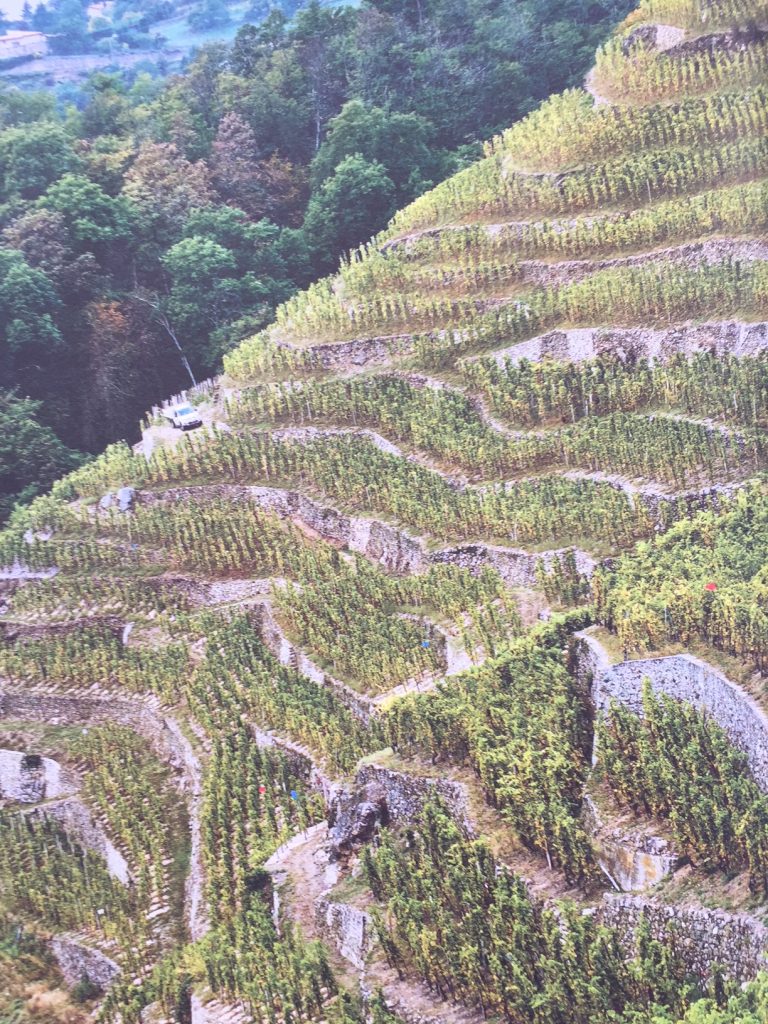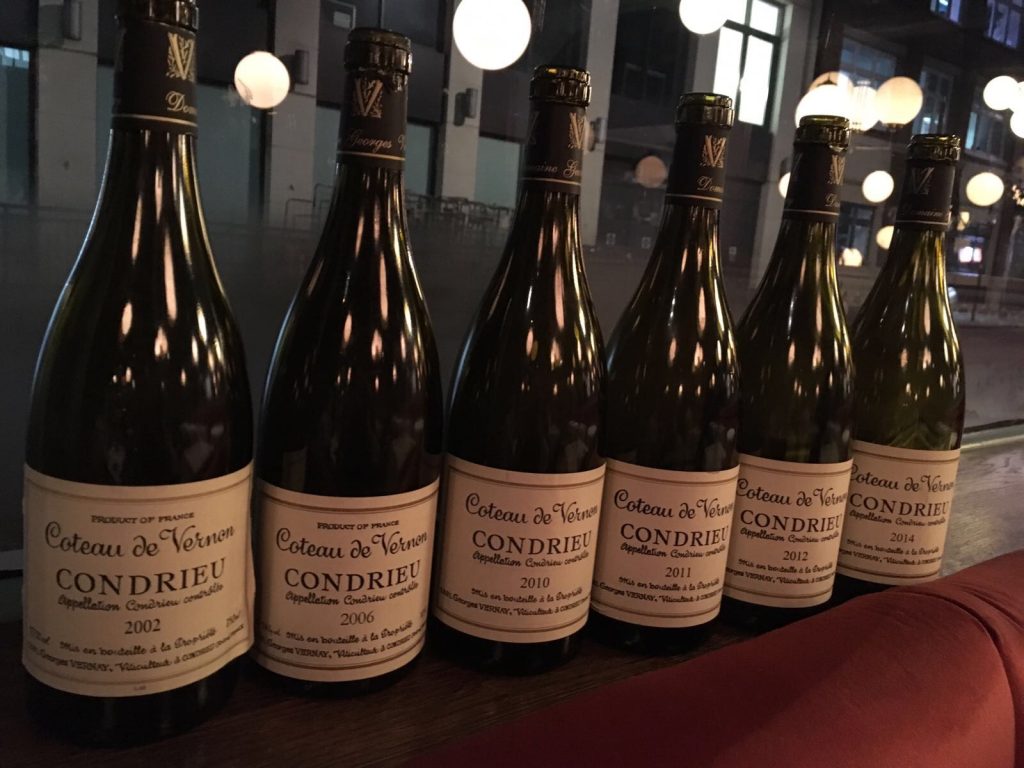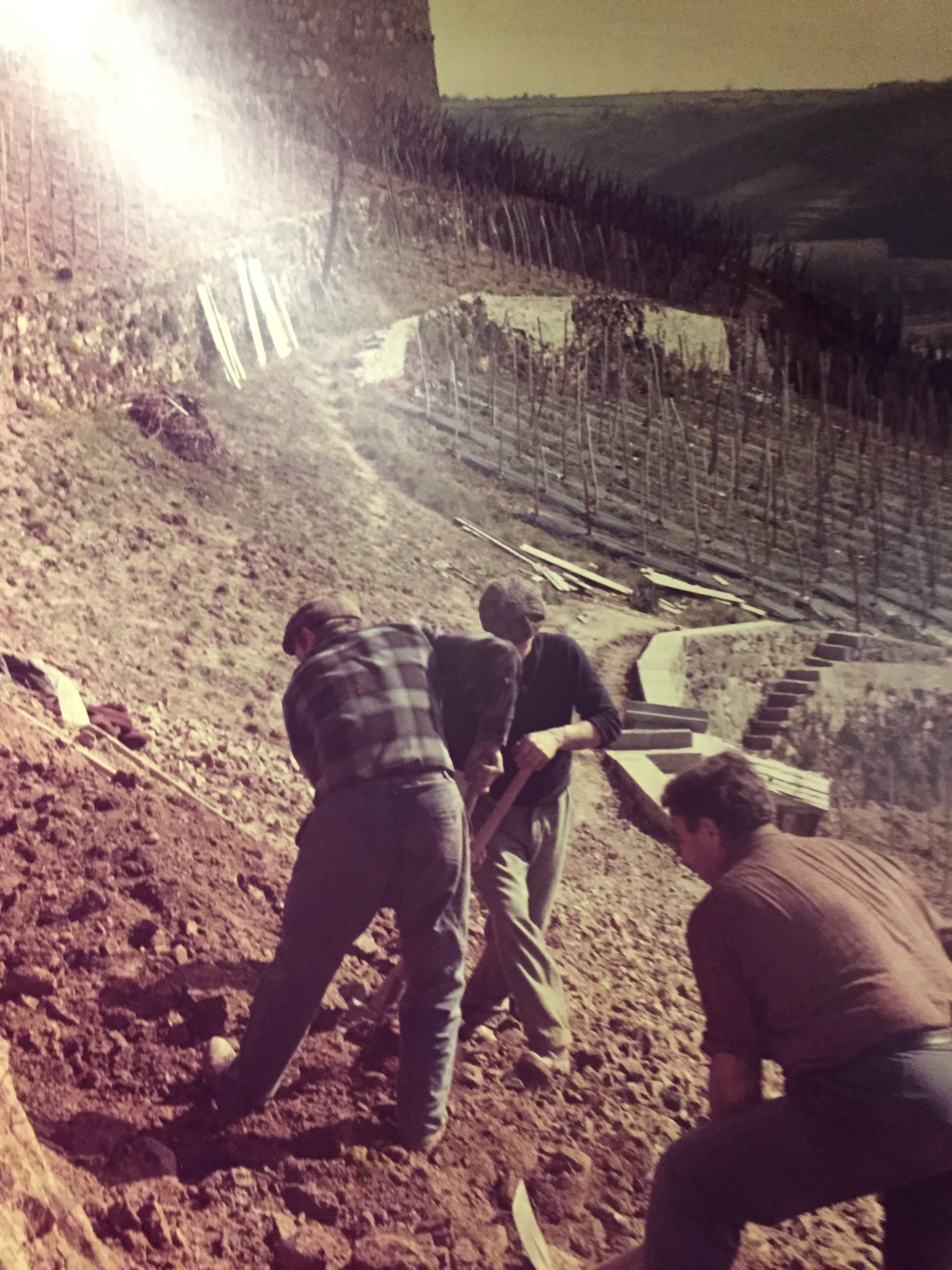Condrieu as an appellation does not generally enjoy the favour of the cognoscenti. The condescension towards Viognier was caused by the exaggerated character of many of the wines and an over-expansion of vineyard land, that when planted on inappropriate slopes, was massaged by winemakers into an over-blowsy wine of little acidity and tropical fruit.
But amongst all that, there remained a man of total seriousness, Georges Vernay, whose wines deserve total respect and close scrutiny.
With the expansion of vineyard area, and growth in places that aren’t really appropriate, new growers pushed the yields up from an average of say 25 hl/ha in the early 1980s to about 50 hl/ha in 2004. Vernay is doubtful quality can be maintained over 30 and in doing so with dubious amounts of battonage and residual sugar, they have created a perception that Condrieu is not a serious wine. The blowsy aromatics and loose acidity have created a sort of exaggerated style, like a man dressed as a woman in pantomime.
That wines like the hyper-mineral Roulot and PYCM are in vogue at the moment have thrown this into contrast like never before.
Proving the opposite and making a wine that has all of the stuffing and poise of any of the worlds great wines is George Vernay’s Coteau de Vernon. The greatest Condrieu of them all.
The Coteau de Vernon is formed of one main plot, a convex, south-east facing hill composed of mica-filled granite. At just under 1.7 hectares it produces around 400 cases a year. It is vinified at a maximum of 18 degrees in cask, 25% new, the rest up to 5 years old, it’s ageing is typically 12-16 months.

2014 Coteau de Vernon
Fresh and bright, both in colour and in composition, discreet aromatics which is something the whole range share, in comparison to one’s mental image of Condrieu. Nice minerality and length (+2)
2012 Coteau de Vernon
More powerful than the 2014, and the better for it, still perhaps in a middle place between youth and maturity. (+3)
2011 Coteau de Vernon
A bit herby, lighter than the 2012, nice elegance (+1)
2010 Coteau de Vernon
Incredibly powerful in the mouth, with outstanding persistence. Premier league wine that only doesn’t get a higher mark as it lacks maturity in my mind (+4)
2006 Coteau de Vernon
Quite a different character on this wine, reminds me a bit of a Jurancon sec, a kind of sour apple flavour. A deeper colour as well. It seems a bit poorly crafted in comparison to the other vintages. Our sommelier commented that it could be that this was the last vintage that Georges himself consulted on – I don’t know if that’s true. (-3)
2002 Coteau de Vernon
Not a great vintage, but I thought this was incredible. Really nice balance and development of subtle aged character. What I like as well is that as the wines get older they seem to lose the Viognier top notes and taste more of the granite terroir. Also, the first wine of the line up that I thought was truly mature. Christine Vernay says the wines should be drunk at about 10 years, but based on this, I would say more like 20 in good vintages. (+4)

In sum, these wines offer up a lot more subtlety than I think most people were expecting, and the framework for ageing is a lot more extensive then you might assume. In fact, I would not really look at anything younger than 2010 for drinking now. Problem is, I suppose almost zero availability of the older vintages. They get snapped up pretty quickly, and for good reason.
Whilst Christine Vernay is the winemaker through our series of wines, the legacy is George’s and his was the vision for the domaine. Christine’s efforts with the reds are a new direction and one we didn’t the chance to explore this time.
When tasting these wines you’re aware just how different these wines are to anything that is produced in Condrieu, with the possible exception of Perret’s Coteau de Chery.
As John-Livingstone Learmonth rightly observes: “The debt to him from anyone who loves Condrieu or even Viognier wines is enormous, he is Le Grand Patron”
He didn’t just safeguard the region through the dog-days of the 1950s and 60s when no-one wanted to work the vines, he points at what is possible with the right land and the right winemaking. Not just serious wine but great wine, every bit the equal of Grand Cru Burgundy.
Post-Script – A nice photo we saw at the estate of Georges Vernay working the Coteau de Vernay vineyard in the 1970s.

